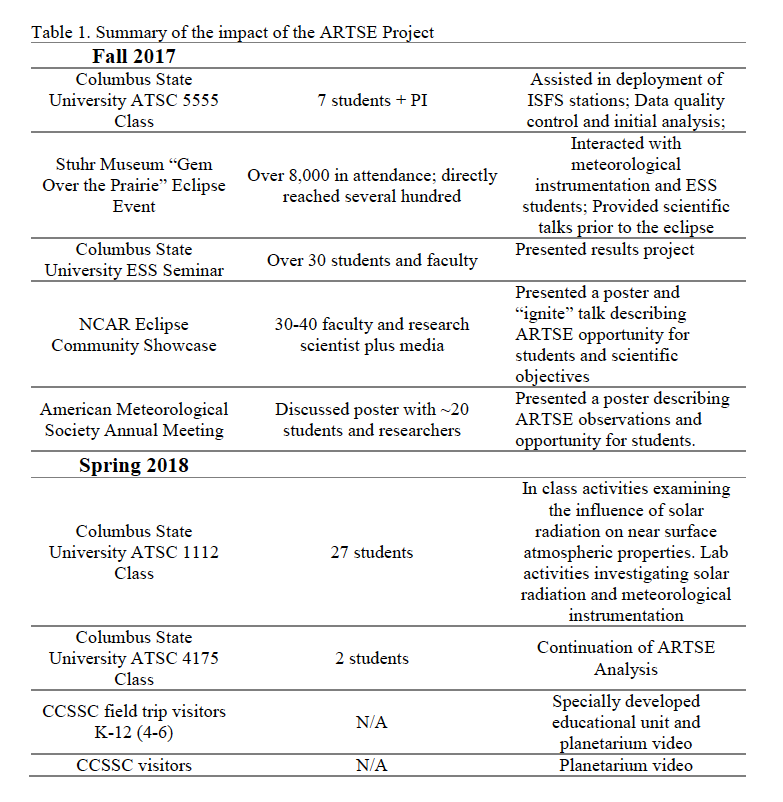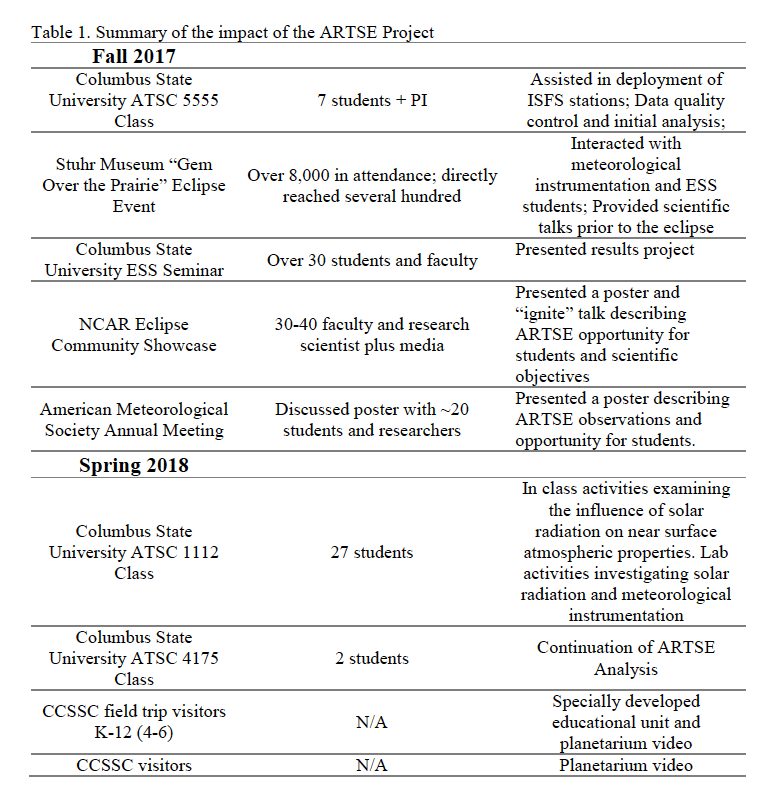The most relevant components of the education deployment for the Fall 2017 semester were the field deployment and the execution of the ATSC 5555 Selected Topics in Atmospheric Science course. The field deployment was a success for both educational and scientific objectives. The students jumped right in and helped with the deployment of the museum tower, asked a lot of questions and acquired the hands-on experience that was desired for them. Similarly, the outreach at the museum was a success. The students were able to interact with many people. Several of the students were even interviewed by a local news station. In their comments at the end of the course, the students spoke very positively about the trip. When the students were asked what they liked about the course, the responses included:
- “Learning and developing a knowledge to understand how the boundary layer weather variables react to each other.”
- “Collaborating with the guys from CSU's CCSSC and NCAR.”
- “The trip was definitely the best part, but the class was good too.”
The course itself was implemented as planned, but the students didn’t seem to get as much out of the course itself. For one, there was likely too much expected of the students over the course of one semester. This idea is discussed further in the next section. Second, the data were not received until the end of October due to a processing issue. While this issue likely could not have been avoided, it did reduce the amount of time students were able to spend with the data.
While this deployment was designed to enhance student education, much was learned on the part of the PI as well. The following are brief takeaways from execution of the course itself:
- More should have been done to assess the success of the experience prior to the end of the class. For example, a pre-course / post-course assessment and an instructor designed questionnaire for students regarding their opinion of the course, could have been implemented.
- Use an open source programming language (e.g. Python) instead of a cost-prohibitive one. Such a change would have allowed students to spend more time with the data outside of the computer lab (which was frequently occupied).
- More independent background reading should have been required and students should have been held accountable for the reading.
- Perhaps less time should have been spent on the fundamentals of programming and more time on data analysis. While the former is very important, it was just too much information for one class when combined with the other material that was presented (especially for students with no prior knowledge).
The students themselves also came up with some lessons for future eclipse-centered field deployments. These included:
- “… do a soil test to know what of soils are present.”
- “…set up more towers in more varied locations. We could have tried setting up towers in more arboreal locations, like forests.”
- “ …Collect data from a couple more locations along totality …”
- “…focus on CO2 levels and crops for agricultural productivity loss…”
Summary
The ARTSE project provided a tremendous opportunity to enhance the education of undergraduate students while taking advantage of a unique outreach opportunity during a nationally recognized event. Though the scale of this educational deployment was relatively small (both from a resource and temporal perspective), efforts were made to reach as many people as possible. See Table 1 for a detailed breakdown of the ARTSE impact. Overall, this deployment was a success both in terms of the field deployment and the course. The students learned about complex meteorological instrumentation, helped deploy the instrumentation, performed low-level analysis on the collected data, and presented the results of the analysis in a public forum. Further, the collected data will continue to be used to enhance undergraduate and K-12 education through incorporation into CSU courses and CCSSC offerings. Both the students and PI were very grateful for this opportunity that would have not have been possible for us otherwise.

